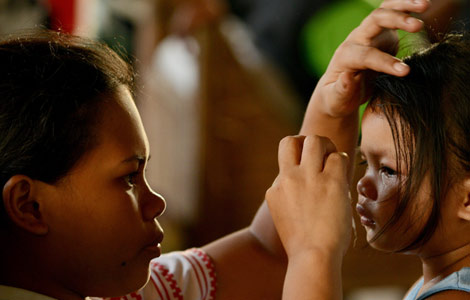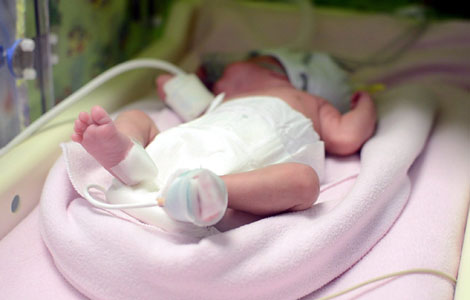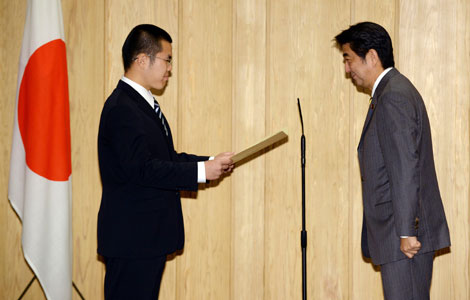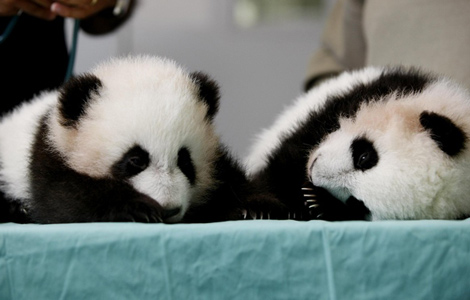

|
|
|
A Tibetan woman Romain shot in Sichuan province in 2007. [Provided to China Daily] Click for more photos of Yann Romain |
Jaded after years of snapping shots of models, Leading photographer changes direction in China
There are at least a couple of things Yann Romain cannot stand about Beijing. One is that it is hard to find a female model "who has not had a face job"; the other is that those who run fashion magazines are often the "young, stuck-up know-it-alls". That is why Romain, 48, a French photographer who has been shooting pictures for fashion magazines in France for 15 years, steers away from the industry in China.
Yet Romain not only lives in Beijing, but has called one of its hutong home for almost a decade.
"When I first came here 13 years ago to spend my holidays, I was amazed by the streets here. It was in November and pretty cold, but people just talked and played in the streets as if they did not feel cold at all. I liked the atmosphere."
He has since spent much of the past 10 years traveling around China, taking photos from the perspectives of fashion and style.
Romain recalls when he quit school at 10 and started working in his uncle's restaurant in Paris to make pocket money. Over the next two years he earned a chance to work in a photo studio assisting many famous fashion photographers including Michael Doster, Patrick Demarchelier, Bill King and Guy Louis Bourdin.
| ||||
He shot photos for fashion magazines such as Vogue, Madame Figaro, Elle and Glamour, with Madonna, the US pop singer, being his model once.
Thirteen years ago, at the suggestion of his father, Romain traveled to Beijing on holiday and fell in love with the city. Four years later he rented a siheyuan, a courtyard house, in the Gulou area and has lived there ever since.
From 2004 to 2006, he traveled to many Tibetan areas.
"I went to Lhasa about 20 years ago but was disappointed because it was too commercial for me, so I traveled to Gansu and Qinghai provinces and shot many great pictures," he says.
With Tibetans, Romain focused on their life and style, rather than their religion.
"Many people like lamas and those in monasteries talked about their religion, but there are people who live a life there. I talked to local people and learned about how they live, what they wear, the colors of their clothes and decorations, and why they use them.
"I love colorful things a lot because they make people happy," he says.
Romain stayed in the provinces on and off for two years. In 2006, he co-published a book titled Tibet Style with his father.
The pictures in the book were shot by Yann Romain during his stay with the Tibetan nomads. He tries to reflect in this book the Tibetans' "wealth, pride and honor they have inherited from their ancestors from their finery (that) includes one-armed fur-lined coats, extravagant beaded necklaces, brightly colored fabrics with simple geometric patterns, chased silver jewels studded with semi-precious stones, silk brocade, and scarlet ... robes laden with coral and silver jewelry".
Apart from the book, in 2007 and 2008 Romain also held photo exhibitions on Tibetan style in Paris.
"The exhibitions were very successful. I shot those pictures from a Westerner's perspective, so it was easier for people in France to understand, although I had been in China for several years by that time."
Romain is also attracted to Peking Opera. In 2006 he met a student from the National Academy of Chinese Theatre Arts and was introduced to the school to shoot pictures.
"I'm very interested in the clothes, the practice, the make-up and also how they move on stage," he says.
Romain started trying his own styles since 1992 when he found fashion photographs increasingly boring. He asked his father, who specializes in painting with ink and water, to paint on his photos.
In China, Yann Romain is using the technique to present his understanding on China's past and present.
He has taken a collection of pictures featuring a young Chinese woman. Onto the photos, he has added many other elements, which are often seen as a postmodern collage of numbers, characters and cuttings from fashion magazines and old pictures.
The focus of the photos is the woman wearing exaggerated hairstyle, make-up, high-heel shoes and fashionable dresses, posing at run-down places where the paint on the walls is peeling off. On the badly stained walls are outdated New Year pictures. The only furniture is a bed covered with simple bedclothes that were popular in the 1990s. The pictures are very colorful but look old and sad.
"The decoration of the place is a mix of generations. It shows what China was like before and how the young girls have changed one generation later," he says.
"I want to show that young girls in China love spending most money on latest mobile phones, fashionable clothes and cosmetics, (but) they have to live in cheap houses."
Some of the photos also portray wistful girls who seem to be longing for love.
Now Romain is ready to direct his first movie, about a traditional local theater in Ninghai county in Zhejiang province, East China. The story is set about 500 years ago.
At home in Beijing, Romain has been writing the script intermittently for three months, he says, and it is now almost finished.
The film company, whose name he will not divulge, has invested 6 million yuan ($940,000, 767,000 euros) in the movie.
"It is a very small budget because it is a new company. The movie is about a big local family that runs a theater business. They have a girl who is very different from other people. She is very adventurous and she falls in love I want to show people that China was a very romantic country before."
His inspiration sparks from his travels to Ninghai county, where the producer comes from.
This year he went to Ninghai and was amazed by the theaters. He learned from locals that in the Ming (1368-1644) and Qing (1644-1911) dynasties, theater-related businesses flourished there.
Yann says that standing in the villages and gazing upon the theaters reminded him of those times.
His drive to make a movie about theater and opera is reinforced by his experience with the National Academy of Chinese Theatre Arts, which has cultivated his interest in other forms of opera and theater.
Romain says that when he was young, his mother, a gypsy dancer, often took him to the circus, and he always wanted to blend gypsy culture with traditional Chinese culture. As a result, the theater business in the movie will include animal performances.
"Theater life (in the past) in Asia, like in Europe, was a life of love and passion. I hope my movie can show that kind of feeling. Some places I have visited in Ninghai still retain that emotion."
Although nothing has been settled yet, Romain says the ideal leading lady for the movie would be Hong Kong actress Maggie Cheung, whom he has met twice at Mademoiselle Li, a traditional Chinese tea salon his father runs in Paris.
"She is a very charming woman, and I hope she will accept my invitation I (am doing) this movie just like I do pictures or music: to make people dream and travel. I believe that if we have a nice story and we make nice pictures with good acting, people will like it."
yangyangs@chinadaily.com.cn
(China Daily 07/27/2012 page29)







